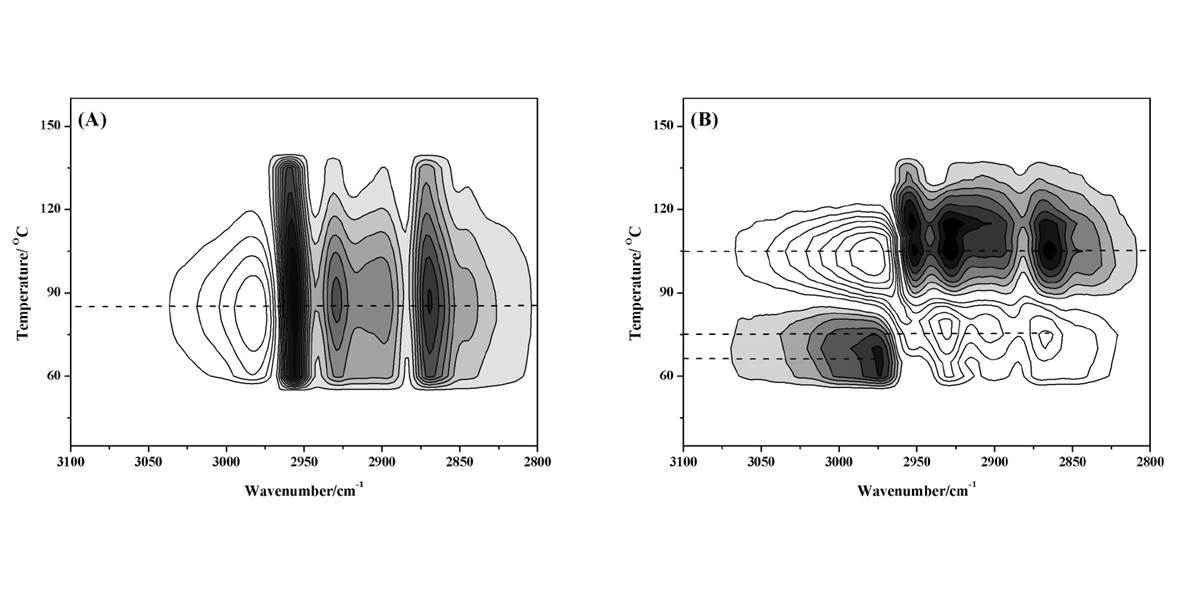Spectral Insight into Intensity Variations in Phase-Transition Processes Using 2DCOS...
Citation
Mengyin Wang, Shengtong Sun, and Peiyi Wu*. Spectral Insight into Intensity Variations in Phase-Transition Processes Using Two-Dimensional Correlation Analysis. Appl. Spectrosc. 2010, 64, 1396-1406.
Abstract
Two-dimensional correlation spectroscopy (2D-COS) is widely used in studies of phase-transition processes to provide valuable order information that is useful in investigating these mechanisms. During phasetransition processes, the spectral intensity always changes in an “S”- or “anti-S”-shaped curve. Sample selection of the large and complicated dataset for 2D correlation analysis may impact the resulting sequence and should be given serious consideration. Additionally, the relationship between the sequential order obtained from 2D-COS and the parameters of the intensity change, namely, the transition point and the change rate, is still poorly defined. This article makes an attempt to resolve these problems based on the analysis of simulated spectra by assuming that the band intensity changes in a sigmoid manner without a step delay. It is concluded that the sample range around a transition point with a drastic intensity change defined by asynchronous perturbation-correlation moving-window (PCMW2D) analysis is a reasonable choice, and in this region a band that changes earlier as determined by 2D-COS most likely has an earlier phase-transition point. Also, from the results of segmental analysis, it is proposed that 2D-COS can distinguish the sequence of two bands using only rate difference; however, the rate difference and the form of the intensity change should be considered comprehensively. The insights from the simulated results are applied to analyze the temperature-dependent infrared (IR) spectra of poly[di(butyl)vinyl terephthalate] (PDBVT). The phase-transition mechanism of PDBVT can be clearly found using a suitable sample selection method.


